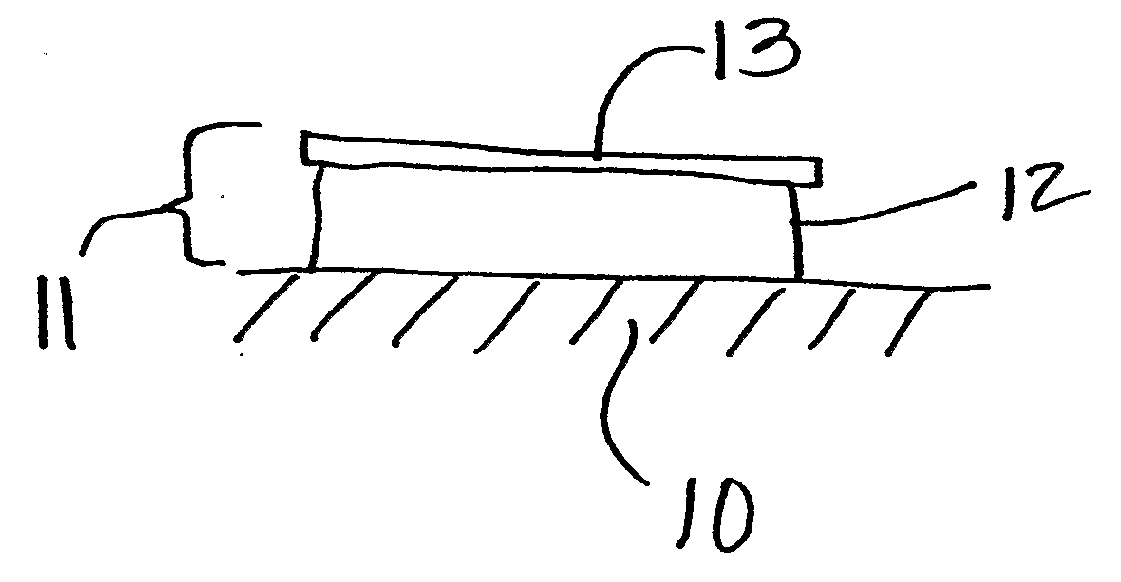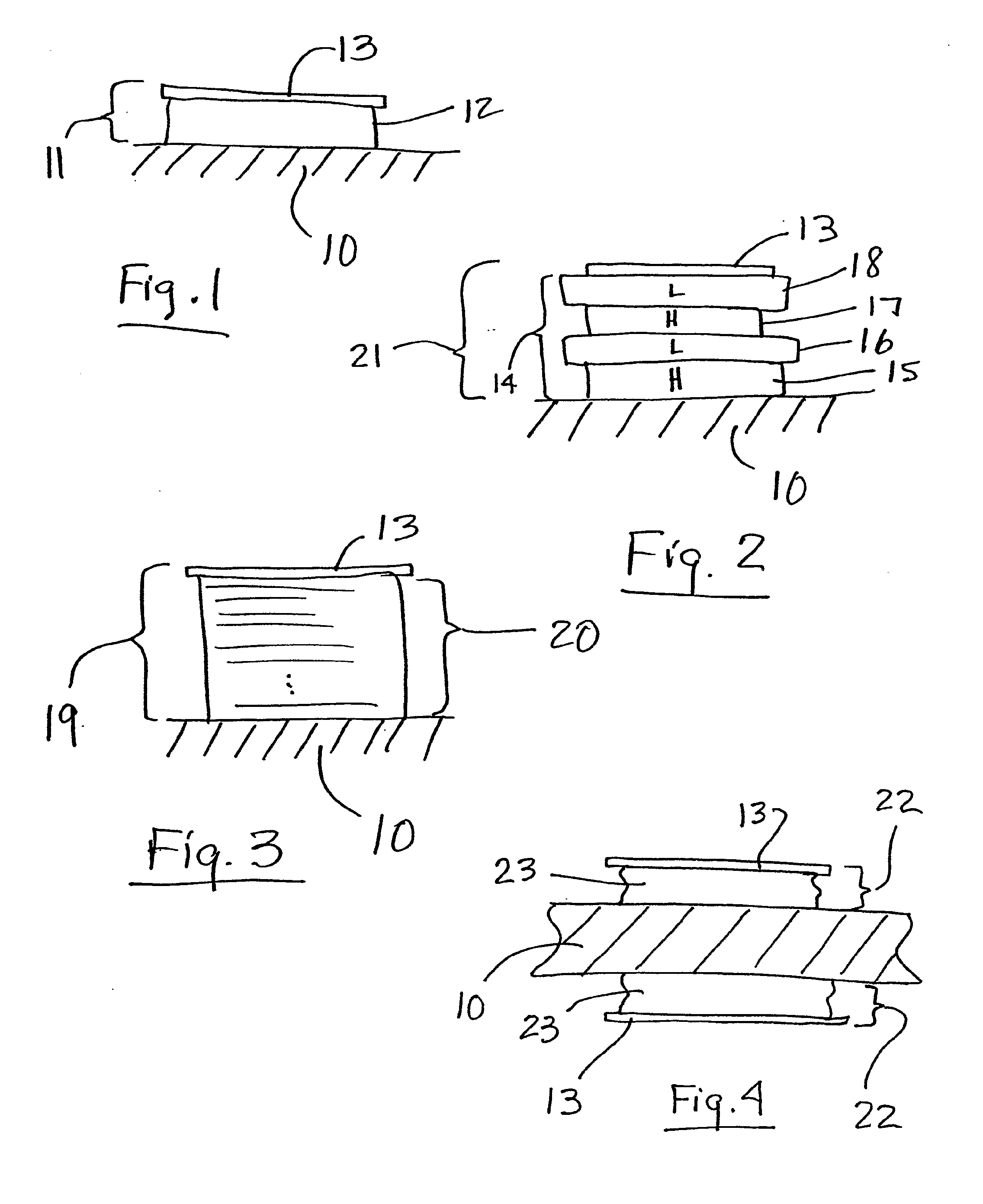Anti-Reflective Coating for a Substrate
- Summary
- Abstract
- Description
- Claims
- Application Information
AI Technical Summary
Benefits of technology
Problems solved by technology
Method used
Image
Examples
Embodiment Construction
[0031] The present invention relates generally to an anti-reflective coating for a substrate and a method of applying an anti-reflective coating to a substrate. The anti-reflective coating in accordance with the invention includes an anti-reflective stack applied to a substrate and a thin high refractive index metal oxide coating applied to the outer surface of the anti-reflective stack. The preferred method in accordance with the present invention includes providing a substrate to be coated, applying an anti-reflective stack to the substrate and applying a thin, high refractive index metal oxide layer to the outer surface of the anti-reflective stack. The invention further contemplates and includes the provision of an anti-reflective stack in which the desired optical properties have been re-optimized to compensate for the added metal oxide layer.
[0032] The substrate to which the anti-reflective coating is applied in accordance with the present invention may include any transparen...
PUM
| Property | Measurement | Unit |
|---|---|---|
| Thickness | aaaaa | aaaaa |
| Nanoscale particle size | aaaaa | aaaaa |
| Refractive index | aaaaa | aaaaa |
Abstract
Description
Claims
Application Information
 Login to View More
Login to View More - R&D Engineer
- R&D Manager
- IP Professional
- Industry Leading Data Capabilities
- Powerful AI technology
- Patent DNA Extraction
Browse by: Latest US Patents, China's latest patents, Technical Efficacy Thesaurus, Application Domain, Technology Topic, Popular Technical Reports.
© 2024 PatSnap. All rights reserved.Legal|Privacy policy|Modern Slavery Act Transparency Statement|Sitemap|About US| Contact US: help@patsnap.com









